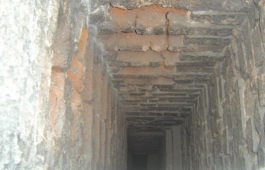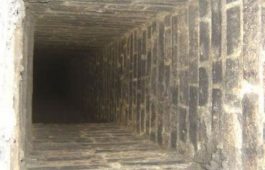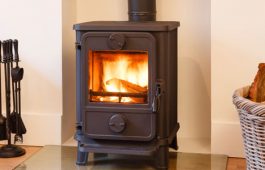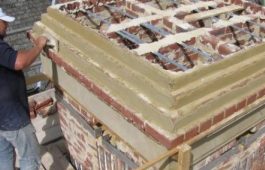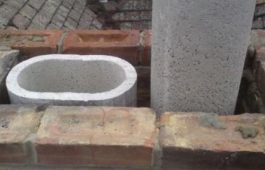Installing a New Chimney
Do you live in a home that has no fireplace? Do you wish sometimes that you could enjoy a cosy real fire? Maybe you thought about the possibility but imagined that this might not be an option. In this article, we look at installing a new chimney from scratch, whether it is possible and if so, how to go about it.
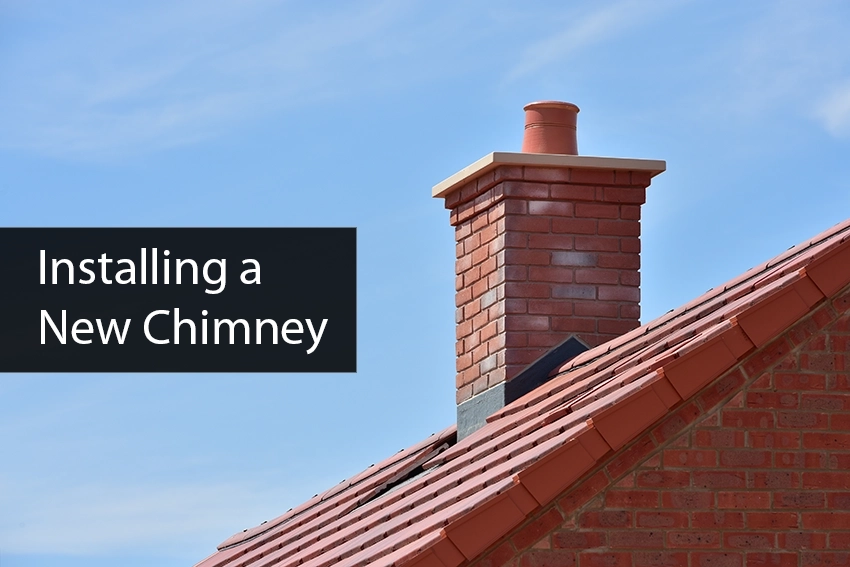
Prior to the advent of central heating, homes were built with a chimney so that they could be heated by a fire. Most people burnt coal, but as populations grew and towns become more populated, the emissions badly affected air quality, resulting in deadly smog. To counter this, the Clean Air Act 1956 was brought into force. Following this, many new homes were built without chimneys having instead central heating fuelled by gas, electricity, or oil.
One of the drawbacks was the lack of a focal point, particularly in the main lounge. Alternatives have included gas and electric appliances with fake flames. Woodburning stoves are also a choice, but some people miss the warmth and comfort provided by a real living fire. For a real fire, you need a chimney.
Do you live in a home that has no fireplace? Do you wish sometimes that you could enjoy a cosy real fire? Maybe you thought about the possibility but imagined that this might not be an option. In this article, we look at installing a new chimney from scratch, whether it is possible and if so, how to go about it.
Prior to the advent of central heating, homes were built with a chimney so that they could be heated by a fire. Most people burnt coal, but as populations grew and towns become more populated, the emissions badly affected air quality, resulting in deadly smog. To counter this, the Clean Air Act 1956 was brought into force. Following this, many new homes were built without chimneys having instead central heating fuelled by gas, electricity, or oil.
One of the drawbacks was the lack of a focal point, particularly in the main lounge. Alternatives have included gas and electric appliances with fake flames. Woodburning stoves are also a choice, but some people miss the warmth and comfort provided by a real living fire. For a real fire, you need a chimney.
Installing a new chimney – is it possible?
The answer is – yes! Billing Chimneys has installed chimneys on all kinds of properties and whilst it’s usual for them to be included on a new build or reconstructed as part of the renovation of an existing chimney, it’s certainly possible to have a new chimney built onto a home currently without one.
As with all work on chimneys, you need to get expert advice before you begin.
What to consider
Cost
Think of installing a new chimney as if purchasing a new appliance. You would want the appliance to fit into the design and layout of your home. You want it to be safe and reliable and you want it to be energy efficient. The cost of installing a new chimney from scratch will depend upon the scope of the work. Think carefully about the look you are trying to achieve for your home as this will affect the materials needed and overall cost. Also, a chimney is a long-term investment.
Upheaval
It will be necessary to break through an external wall to connect the hearth with the masonry flue. This is a major building job and can cause upheaval to the household. If the work is part of a renovation and the property is empty, then it will be part and parcel of the whole work. If you will be living in the house when the work takes place, it will be disruptive. However, this can be kept to a minimum by engaging experience chimney specialists, such as Billing Chimneys.
Planning and building regulations for installing a new chimney
Planning Permission
If you are having a new chimney stack constructed onto your home where none has previously existed, then planning permission will be required. There are some rules on permitted development and on where the chimney stack is to be positioned on the property.
Building Regulations
Building Regulations are about safety. It is extremely important that any new chimney stack meets all the necessary Building Regulations as a badly constructed chimney stack will most certainly be dangerous. There are structural requirements and rules on distance from other buildings that will need to be considered.
Conservation areas
Where a property is located within a conservation area, there may be local rules on development, and you will need to check with your local authority if there are any restrictions.
In each of these instances, it is advised you check planning and other permissions in the very early stages to prevent possible delays or additional expenses later. As you can see, it is best to get professional advice at the outset and Billing Chimneys staff can help with this.
Types of property and installing a new chimney
Pre 1960s properties
It is most likely that properties built prior to 1960 will have a chimney. If there has been a chimney previously it may be that only some part has been removed. It may not need a new full chimney and stack. The best way to find out is by having a survey done and an inspection of any remaining chimney structure.
Post-1960s properties
Those properties built since the Clean Air Act are the ones likely to be without a chimney stack and it is commonly these homes where the owners are seeking to add this attractive feature. It is possible to install a new chimney subject to the planning rules and building regulations mentioned above.
Listed and Heritage Buildings
Whilst listed buildings tend to be of age, and therefore built when chimneys were needed, it is not impossible for a building without a chimney to be listed. You will know whether your home is a listed building, so to have a new chimney added would need Listed Building Consent as well as any other planning consents. You can read more about works on these buildings here: Listed Building Consent and Chimney/Fireplace Works
Leasehold Properties
If your property is leasehold, there may be restrictions on what development you can undertake. You will have a lease and your property may be subject to a covenant. You will need to check these with your freeholder before any major works, such as installing a new chimney, are undertaken.
Designing your new chimney
We’ve looked at the importance of ensuring you have permission to install a new masonry chimney. Once this is assured you can begin your project in earnest. Engaging experts in the field like Billing Chimneys can save time and effort from having to look for more than one contractor as we can undertake the job from start to completion.
You will have looked at ideas for style and materials and what you envisage. Not only for the internal look of the new chimney breast but also the new masonry chimney and stack on the outside. It is exciting to see what your new chimney would look like and there are computer programmes that allow designers to create realistic images. However, what you initially imagine may not always be possible. When installing a new chimney, there may be constraints on the type of brick that you can use, and this would be stipulated in the planning stages.
If you have a designer working for you, then they may find it helpful to consult Billing Chimneys and take advantage of our chimney design consultancy. When designing your new chimney, you will need to consider the character of the house. Whilst it could be a new feature, there are planning rules affecting positioning. New chimneys are usually placed at the side or back of the property.
The height of the new chimney is also restricted by the regulations as is the position in relation to neighbouring properties. See our Chimney Height article. All these are considerations at the design stage when installing a new chimney.
Building your new chimney
From design to choosing an appliance and everything in-between, Billing Chimneys are the experts to call.
Permissions are all in place, the design has been agreed and a great contractor like Billing Chimneys has been engaged. It’s all systems go for installing your new chimney. These are major works, so they will entail some disruption.
Foundations will need to be dug adjacent to the outside of the wall where the chimney is to be placed and infilled with concrete. Your local authority Building Control will need to approve the foundations before the masonry work is begun. The chimney will be constructed to the design brief however, it will need to meet all regulations on size. The masonry will also have a damp-proof membrane and be tied into the existing wall.
The other major task when installing a new chimney is to knock through the wall where the new hearth will be to meet the flue on the inside of the chimney. You will need the wall strengthened with a lintel and the floor of the foundation and the inside of the building need to be made level.
Sections of a chimney
A masonry chimney is built of bricks, but there is more to a chimney than the flue and the fireplace, the chimney is the whole structure.
A masonry chimney will need lining. This is to prevent damage to the bricks and mortar and to prevent leaks of the gases that travel up and out of the flue from seeping into the building. We have an article about linings here: Flue Lining. Billing are experts in chimney lining and when our customers are installing a new chimney we will advise on the most suitable liner. See Chimney Liner Installation.
At the top of the chimney, where it meets the roof, flashing will be installed around the stack to ensure there is no leakage of water into the roof. At the very top of the chimney will be a chimney pot and this should be topped with a cowl. Cowls prevent problems with debris falling down the chimney and they can prevent birds from nesting.
The hearth is inside the house, and this holds the firebox, damper, and smoke shelf. These components are important for the draught which helps the fire burn and carries out the gasses formed by burning. The damper also closes the flue to prevent draughts when the fireplace isn’t in use.
Notice Plate
When your new chimney installation is complete your installer will provide and fix a Notice Plate. The notice plate contains essential information, this includes:
- Location of the beginning of the flue, hearth, or firebox
- Category of flue and generic types of appliance that can safely be installed
- Type and size of flue, any liners, and manufacturer’s name
- Installation date
Notice plates should be placed where they can easily be found and referred to. They must be fixed securely, made to last and the text should be permanent. Good places to attach a notice plate are beside the water stopcock or the electricity consumer unit.
Notice plates provide information for future care, maintenance, repairs and alterations.
Main parts of a chimney
- Chimney – the whole structure
- Flue – where gasses form during burning rise and escape. A chimney can have more than one flue
- Chimney Stack – The part seen above the roof
- Chimney pot – on top of the stack, usually but not exclusively terracotta
- Cap – for unused flues
- Cowl – installed to prevent nesting and debris getting into the flue
- Chimney Breast – is inside facing the room
- Mantle – the shelf over the chimney breast
- Hearth – the floor of the chimney breast
- Firebox – area where the fire is lit
- Damper – structure inside the flue to stop draughts when the fire isn’t being used
- Smoke shelf – collects rain and debris and prevents downdraughts
- Smoke chamber – directs smoke and gases up and out of the flue
As you can see, there is more to a chimney than at first meets the eye and it’s important that each component plays its part. Burning of fuels creates gases and these need to escape safely so as not to escape into rooms and cause harm.
The Importance of the build quality
If your new chimney has been well built it could last a century! One of the things we at Billing Chimneys put above everything else in our work is safety. A quality build will have adhered to all current building regulations that have been developed with safety at the core. If your chimney has been well built, there should be few if any problems for many years, but it will still need regular sweeping and inspections of the inside of the flue and the stack. It is important that the chimney is kept clean and well maintained and Billing Chimneys can help you do this.
The new chimney sits very well on the house, my thanks to Tony, Trev, and Russell for their expertise in achieving this end. Mr P Gorley
Aftercare
You now have your new chimney installation and you’re sitting beside a roaring fire. This is not the end of having a chimney, there are responsibilities in having this new and attractive focal point in your room.
Regular Maintenance and Inspections
At the very start with a new chimney installation, you will learn that part and parcel of having a chimney is keeping it maintained. With a new, well-built chimney there will be few if any problems for many years but, like any other appliance, it will need care and maintenance. Chimney maintenance is important for both safety and efficiency. We recommend that a chimney should be inspected and swept annually. If a chimney is in regular use, it may need sweeping twice a year. Billing Chimneys offer reactive and proactive chimney maintenance services and you can read more about this here Chimney Maintenance.
As part of keeping our services the best and most efficient around, Billing Chimneys carry out inspections of flues using state-of-the-art CCTV. Stacks, including flashings, are now inspected using drones, please see Chimney Drone Inspection.
Safety is key
To stress the importance of this we have some articles about chimney safety. You can read them here: Chimney Safety, and Carbon Monoxide Poisoning.
Alternatives to installing a new chimney
If you have read all this and concluded that having a new chimney installation would be too disruptive, expensive, or simply not for you, there are alternatives to an open fire. One that has become popular recently is having a wood-burning stove installed. This is another of Billing Chimneys’ expert and quality services. You will find a lot of information on installing wood-burning stoves on our website. See:
- Wood Burning Stove Installation
- Installing a wood burning stove without a chimney
- Choosing a wood burning stove
Billing Chimneys’ business is based around chimney construction, and we are experts in the field. By engaging Billing Chimneys for installing a new chimney you have people on your side who know what to do from your first ideas to lighting your first fire. If you dream of having a brand-new chimney and hearth, then why not get in touch and see if that dream can come true?
